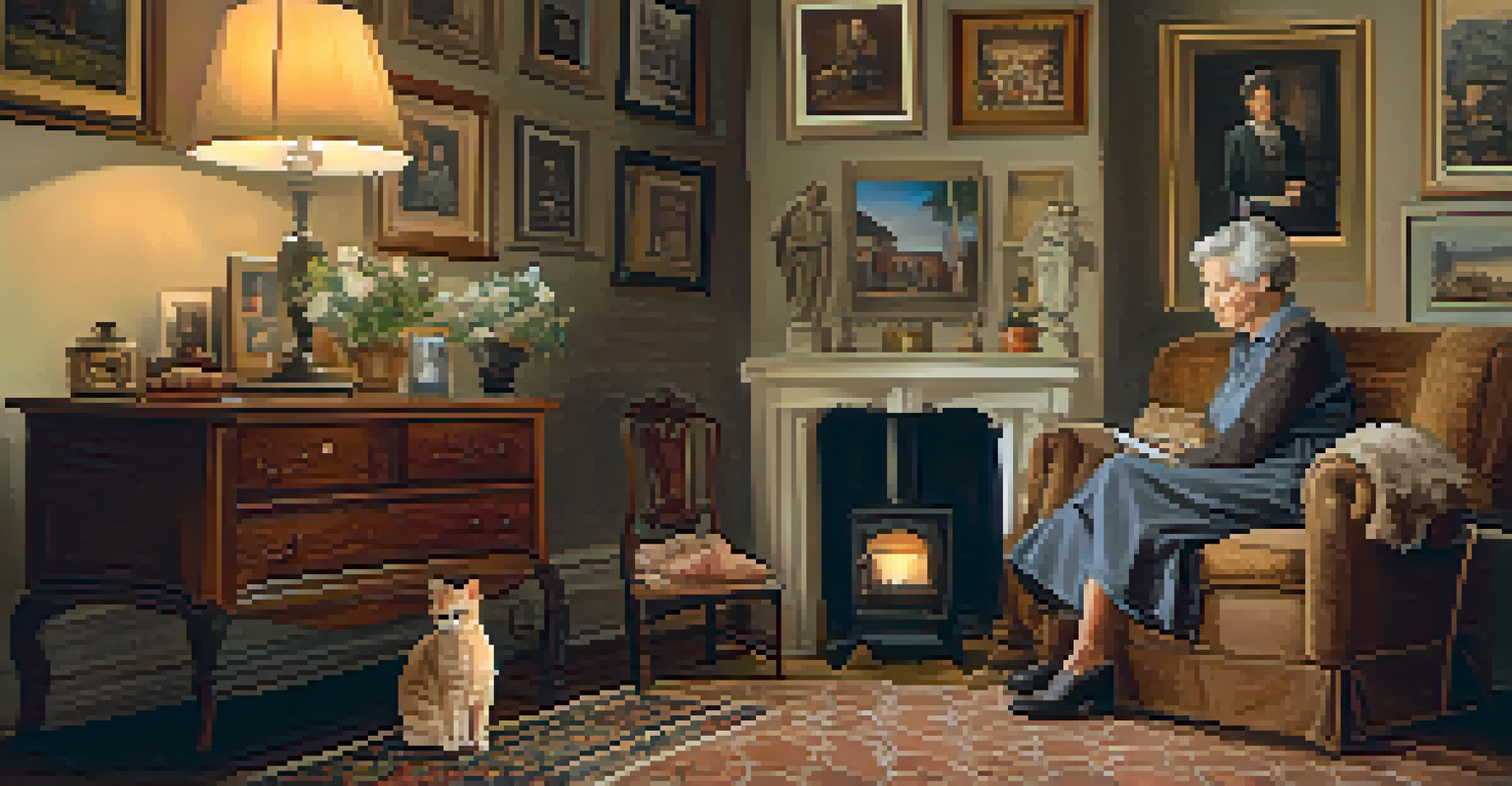Using Flashbacks Effectively: Techniques for Nonlinear Storytelling

Understanding the Role of Flashbacks in Storytelling
Flashbacks serve as powerful tools in storytelling, allowing writers to reveal crucial backstory. They can deepen character development by showing past experiences that shape their current actions and motivations. By placing a character's history alongside their present, flashbacks create a richer narrative tapestry.
The past is never dead. It's not even past.
For instance, imagine a detective struggling with a case. A flashback revealing a past trauma could explain their obsession and drive, adding layers to their personality. This technique not only engages the audience but also makes characters more relatable and complex.
In essence, flashbacks can enhance emotional resonance, making readers invest more in the characters' journeys. When used effectively, they bridge the gap between past and present, offering insights that propel the story forward.
Choosing the Right Moment for a Flashback
Timing is crucial when incorporating flashbacks into a narrative. The best moments to introduce a flashback are often during emotional high points or significant plot developments. This technique can amplify the impact of both the present action and the revealed past.

For example, during a climactic scene where a character faces a critical decision, a flashback could reveal their motivations or fears, adding urgency to the moment. This not only heightens tension but also provides context that enriches the viewer's understanding.
Flashbacks Enhance Character Depth
Flashbacks reveal crucial backstory, deepening character development and making them more relatable.
Ultimately, the trick is to ensure that the flashback feels organic and not forced. When it seamlessly integrates with the story's flow, it can make the moment even more compelling and memorable.
Creating Clear Transitions to Flashbacks
Smooth transitions are essential for maintaining narrative flow when inserting flashbacks. A well-crafted transition can guide readers seamlessly from the present moment to the past without jarring them out of the story. Techniques like visual cues or character prompts can help signal a shift in time.
Memory is the treasure house of the mind wherein the monuments thereof are kept and preserved.
Consider a character looking at an old photograph; this visual element can trigger a flashback to a pivotal moment in their life. Such cues provide a natural bridge, allowing the audience to follow along effortlessly. This method keeps the storytelling engaging and cohesive.
Moreover, using consistent formatting or narrative devices—like changes in tone or voice—can further enhance these transitions. When readers can anticipate a flashback without confusion, they remain immersed in the story.
Utilizing Flashbacks to Reveal Secrets
Flashbacks can be an effective way to unveil secrets and deepen plot complexity. They allow writers to plant revelations that alter the audience's perception of the story. By strategically revealing information through flashbacks, writers can build suspense and intrigue.
For instance, if a character has been hiding a significant truth, a flashback can reveal the circumstances surrounding this secret. This not only adds depth to the character but also raises questions that keep readers engaged. They begin to piece together the puzzle alongside the characters.
Timing and Balance are Key
Choosing the right moments for flashbacks and balancing them with present action ensures narrative flow and engagement.
In this way, flashbacks can transform a straightforward narrative into a layered exploration of themes and character dynamics. They invite readers to rethink earlier events, enhancing their overall experience.
Balancing Flashbacks with Present Action
Finding the right balance between flashbacks and present action is vital for maintaining momentum in a story. Too many flashbacks can disrupt the narrative flow, causing readers to lose track of the main plot. Therefore, it's important to use them judiciously, weaving them into the story without overshadowing the present.
For example, alternating between a character's current dilemma and brief, well-placed flashbacks can maintain tension while providing context. This keeps readers engaged with both the ongoing action and the character's past. When done correctly, the past enriches the present instead of detracting from it.
Ultimately, the goal is to create a harmonious blend where flashbacks serve as enhancements rather than distractions. A balanced narrative keeps the reader invested and eager to see how the past influences the present.
Crafting Emotional Impact Through Flashbacks
One of the most compelling aspects of flashbacks is their ability to evoke emotion. When executed well, they can resonate with readers on a deep level, eliciting empathy and understanding for characters. Flashbacks often tap into universal themes of love, loss, and growth, making them relatable.
For instance, showing a character reminiscing about a lost loved one can create a poignant moment that resonates with anyone who has experienced similar feelings. This emotional connection draws readers further into the story, making them care about the characters' journeys.
Emotional Impact Through Flashbacks
Well-crafted flashbacks evoke strong emotions, connecting readers to universal themes of love, loss, and growth.
Therefore, when crafting flashbacks, focus on the emotional truths you want to convey. A well-placed flashback can turn a simple narrative into a powerful exploration of human experiences.
Avoiding Common Pitfalls with Flashbacks
While flashbacks can enhance storytelling, they can also lead to confusion or disengagement if not handled carefully. Common pitfalls include overusing flashbacks or failing to establish clear context. Writers should strive to use this technique purposefully and thoughtfully.
For example, avoid flashbacks that feel repetitive or don’t serve the story. If a flashback doesn’t add new information or depth, it might be better left out. Keeping flashbacks impactful and relevant is key to maintaining reader interest.

By being mindful of these pitfalls, writers can ensure that their use of flashbacks enriches rather than detracts from the narrative. A well-executed flashback should always feel like an integral part of the story.